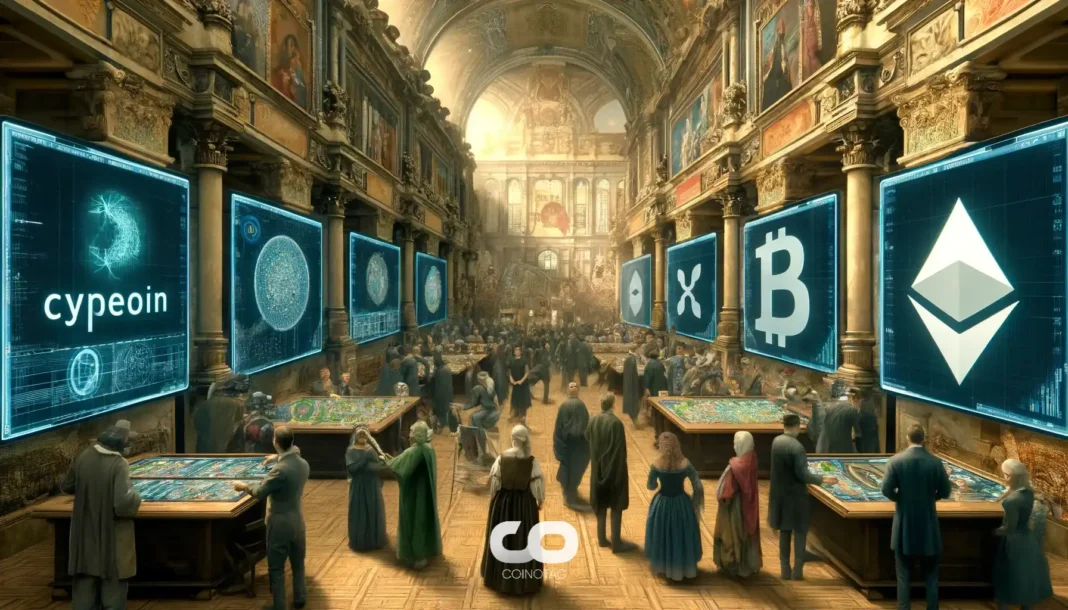-
Aptos has achieved significant milestones in the first week of 2025, marking its entry into mainstream DeFi with Aave v3 and supporting native USDT.
-
This noteworthy advancement positions Aptos as a fast-growing player in the blockchain space, emphasizing its commitment to decentralized finance and user accessibility.
-
Stani Kulechov, Aave’s founder, remarked, “This release is a pivotal move aimed at amplifying the protocol’s reach and addressing liquidity challenges across ecosystems.”
Aptos achieves key DeFi milestones in 2025 with Aave v3’s testnet launch and support for native USDT, enhancing liquidity and network capabilities.
Aave lands on Aptos’ testnet, its first non-EVM blockchain
Aave V3, a leading decentralized finance protocol, makes a monumental entry into the Aptos ecosystem, marking its first implementation outside of Ethereum’s Virtual Machine (EVM). This strategic move has the potential to transform cross-chain DeFi operations, offering a significant opportunity for users to interact with diversified liquidity pools. The Aave team has signaled that this testnet release paves the way for a subsequent mainnet launch, indicating robust confidence in Aptos’ infrastructure.
According to Aave’s founder, Stani Kulechov, the expansion into Aptos underscores not just a new deployment, but a crucial shift towards achieving global adoption of DeFi protocols. He stated that, “With this update, Aave takes a significant step closer to extending the protocol’s reach beyond EVM ecosystems with Aptos.” This sentiment highlights the importance of interoperability in the blockchain sector.
Aptos distinguishes itself through its use of the Move programming language and its dedicated virtual machine, prioritizing **transaction flexibility** and **scalability**. Consequently, the Aptos blockchain supports transactional parallelism, allowing for a more efficient handling of smart contract executions, which is becoming increasingly vital as user demands grow. The proactive embrace of alternative virtual machines, such as Aptos and Sui (SUI), might signify a broader industry trend as developers seek innovative solutions to enhance blockchain usability and performance.
Before focusing on Aptos, Aave established its presence across 13 EVM-compatible blockchains, commanding an impressive $33 billion in net deposits and facilitating hundreds of millions in transactions monthly. As Aptos strives for similar blockchain prominence, the collaboration with Aave could catalyze sustained user engagement and liquidity diversifications across the Aptos network.
Aptos-based USDT now available for large network’s launchpad
In tandem with Aave V3’s introduction, Aptos has also seen the integration of native U.S. Dollar Tether (USDT) within its IDO launchpad ecosystem. This advancement enables users to conduct transactions utilizing USDT, enhancing the stability and usability of digital assets on the platform.
MoveGPT, a standout launchpad catering to early-stage token fundraising on Aptos, now integrates operations with Aptos-native USDT, setting the stage for increased liquidity and investment opportunities. As one of the largest stablecoins globally, USDT significantly enhances the credibility and functionality of Aptos within the competitive DeFi landscape.
The integration of USDT into Aptos underscores its vital role in maintaining market liquidity. As of now, of the $137 billion USDT issued overall, approximately $450 million is Minted on Aptos, accounting for about **0.3%** of the total USDT liquid supply. This figure reflects Aptos’s emerging influence and highlights its commitment to fostering a robust financial ecosystem.
Broader Implications for the DeFi Landscape
The expansion of Aptos into the DeFi realm with Aave and USDT marks a **transformative moment** for blockchain developers and investors alike. The ability to leverage different blockchain environments can lead to a more holistic and inclusive financial system that accommodates diverse user needs and preferences.
The collaboration and technology introduced by Aptos not only broaden the protocol’s functionality but also encourage other projects to explore cross-chain capabilities. As we move further into 2025 and beyond, the importance of adaptable blockchain infrastructures like Aptos may become paramount in promoting decentralized solutions and enabling greater financial inclusion globally.
Conclusion
In summary, Aptos’s recent milestones with Aave v3’s testnet and the adoption of native USDT signify a bold step toward redefining the DeFi ecosystem. These developments not only underline Aptos’s strong positioning within the cryptocurrency landscape but also offer promising opportunities for liquidity enhancement and developer engagement. As the community observes the outcomes from these initiatives, the watchword will remain clear: adaptability and innovation are essential for thriving in the ever-evolving blockchain universe.






